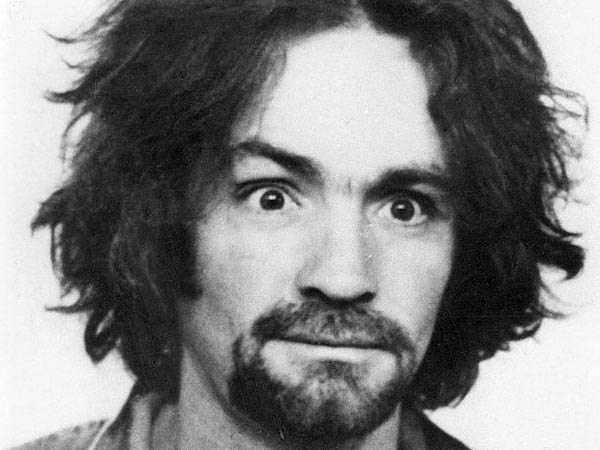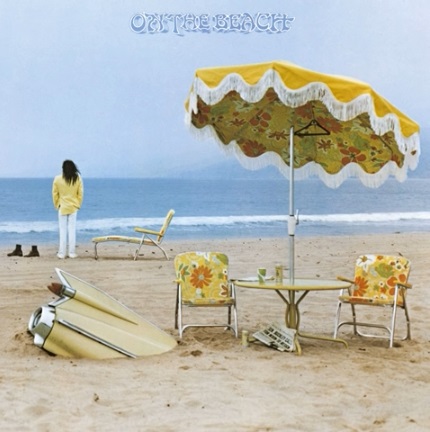Released on July 16, 1974, Neil Young’s fifth album “On the Beach” is pain-stakingly vulnerable, heavy, and unapologetically honest. Poetic lyrics and haunting melodies lament of the egregious nature of the entertainment industry–of society at large–and of his harrowing, innermost turmoil. Arguably, “On the Beach” bids a bitter goodbye to all of Young’s sorrow and despair. “On the Beach” features two sides and a sum total of eight tracks.
By “On the Beach,” Young was hanging onto the tethers of reality. Throughout the 1960s and 1970s, Young quickly ascended to fame. Shortly following his departure from Buffalo Springfield, he pursued a fruitful solo career, collaborating with famed acts like Crazy Horse, David Crosby and Stephen Stills and produced acclaimed albums like “Harvest.” A sequence of personal tragedies struck Young, for example, the death of a close friend and fellow musician from overdose. “On the Beach” is the accumulation of Young’s toils.
Track Number One, Walk On: “I hear some people talkin’ me down, bring up my name [and] pass it ‘round,” Young begins. “They don’t mention the happy times, they do their thing, I do mine.” Immediately, “On the Beach” boldly boasts an upbeat and carefree feeling, expressing that simply because one cannot beat the opposition, one does not have to join them–instead, dust yourself off, disregard the chaos and “walk on.”

“Walk On” was written in response to Lynyrd Skynyrd’s notorious “Sweet Home Alabama.” “Sweet Home Alabama” was a response to Young’s “Southern Man.” Released in 1971, “Southern Man” challenged Jim Crow in the mists of the Civil Rights Movement, proclaiming, “Southern man better keep your head. Don’t forget what your good book says. Southern change gonna come at last. Now your crosses are burning fast.”
Consequently, audiences and Lynyrd Skynyrd alike found the Candian artist to be unjustly cross. Thereon, as Felix Conteras of NPR retorts, Skynyrd’s 1974 hit aimed to “counter what they saw as Young’s one-dimensional stereotype” when lead singer Ronnie Van Zant sang, “Well I heard Mister Young sing about her. Well I heard ol’ Neil put her down. Well, I hope Neil Young will remember, a southern man don’t need him around anyhow.”
The ‘they’ that Young alludes to in “Walk On” is not necessarily Skynyrd, rather the few who disdained Young for calling them out: “Ooh baby, that’s hard to change; I can’t tell them how to feel. Some get stoned, some get strange. Sooner or later, it all gets real; walk on.” Likely, this attitude extends to all criticism that Young received from previous recordings.
Track Number Two, See the Sky About to Rain: A lone organ mimics gentle rainfall. “See the Sky About to Rain” can be described as lethargic and reflective for the narrator feels like he is aimlessly drifting in the world. He tours from place to place, seeing many a face, yet he is unhappy and alone. Through the ceaseless noise, something as a rainy day is strikingly profound.
The narrator is stopped dead within his tracks, left to reminisce. Then, Young questions the price of fame, inquiring, “Some are bound for happiness, some are bound for glory; some are bound to live with less, who can tell your story?” In this statement, Young argues that fame does not always entail happiness. Perhaps, he cannot complain because others have it worse than him but at the end of the day, who does he have to connect to?
Track Number Three, Revolution Blues: The rollercoaster has now plunged, descending into unparalleled twists and turns. In “Revolution Blues,” Young delves into the madness of the late sixties by embodying the twisted, prophetic voice of Charles Manson, who tried to insinuate a race war. The narrator utters, “Well we live in a trailer at the edge of town; you never see us ‘cause we don’t come around” alluding to Spahn ranch where Manson and his followers resided.

Continuing, Young expounds upon the absurd militance of the group: “We’ve got twenty-five rifles just to keep the population down but we need you now and that’s why I’m hanging ‘round.” Chillingly, Young proclaims, “so you’ll be good to me and I’ll be good to you and in this land of conditions, I’m not above suspicion; I wanna attack you but I won’t back you.” The grueling, convoluted sound churns in one’s stomach.
Track Number Four, For the Turnstiles: Foiling “Revolution Blues, For the Turnstiles,” not only showcases Young’s range but, through a folkier approach, allegorizes the tragedy of the industry, painting he and other artists as “sailors” who must depart from their “seasick” lovers to perform for “pimps with tailors” or club owners. He lingers in the footsteps of his predecessors–a taxing endeavor: “You can really learn a lot that way, it’ll change you in the middle of the day and though your confidence may be shattered, it doesn’t matter.”
Track Number Five, Vampire Blues: Alike “Revolution Blues,” Young masquerades beneath the guise of a malicious character in “Vampire Blues.” While the narrator in “Revolution Blues” was more deranged, the protagonist in “Vampire Blues” is restrained, sly and cunning, as suggested by the tempo and the lyrics: “I’m a vampire, babe, sucking blood from the Earth; I’m a vampire, baby, sucking blood from the Earth; I’m a vampire, babe, sell you 20 barrels worth.” Comedically, Young is showcasing the tyranny of the entertainment industry.
Track Number Six, On the Beach: The title track, “On the Beach” illustrates the depraved depths of loneliness arising from a push-pull between performer and audience, vocalizing, “The world is turning away, I hope it don’t turn away…I need a crowd of people but I can’t face them day-to-day.” Overpowering, the alienation echoes in the wailing guitar as Young describes his yearning desire to “get out of town.”
Track Number Seven, Motion Pictures (for Carrie): As the title suggests, “Motion Pictures for Carrie” addresses the falling out of Young’s marriage. Touring had put a strain in his relationship to actress Carrie Snodgress, whom Young instantly fell in love with after viewing her picture in a magazine.
It is through film that Young feels remotely connected to a home: “Motion pictures on my tv screen, a home away from home and I’m living in between.” Though “deep inside [himself]”, Young is hopeful that “[he’ll] get out somehow” for her, stating, “And I’ll stand before you, I’ll bring a smile to your eyes.”
Track Number Eight, Ambulance Blues: My personal favorite, “Ambulance Blues” is an enigma within itself. The breathiness and distance of the instrumentals matched by Young’s ambiguous lyrics paints a dream-like, surrealist picture. Since “On the Beach”’s release nearly 46 years ago, avid music fans have heavily debated the true meaning behind “Ambulance Blues” and remains a soul-stirring epic.
Much can be said about the ability of Neil Young. Throughout their illustrious careers, few artists had a lasting impact on the medium unlike Young. Impressively, Young distilled a poignant sense of disarray and illusion into a tangible being that, years following its debut, still deeply resonates with audiences.
Taylor Pendleton
Reporter

